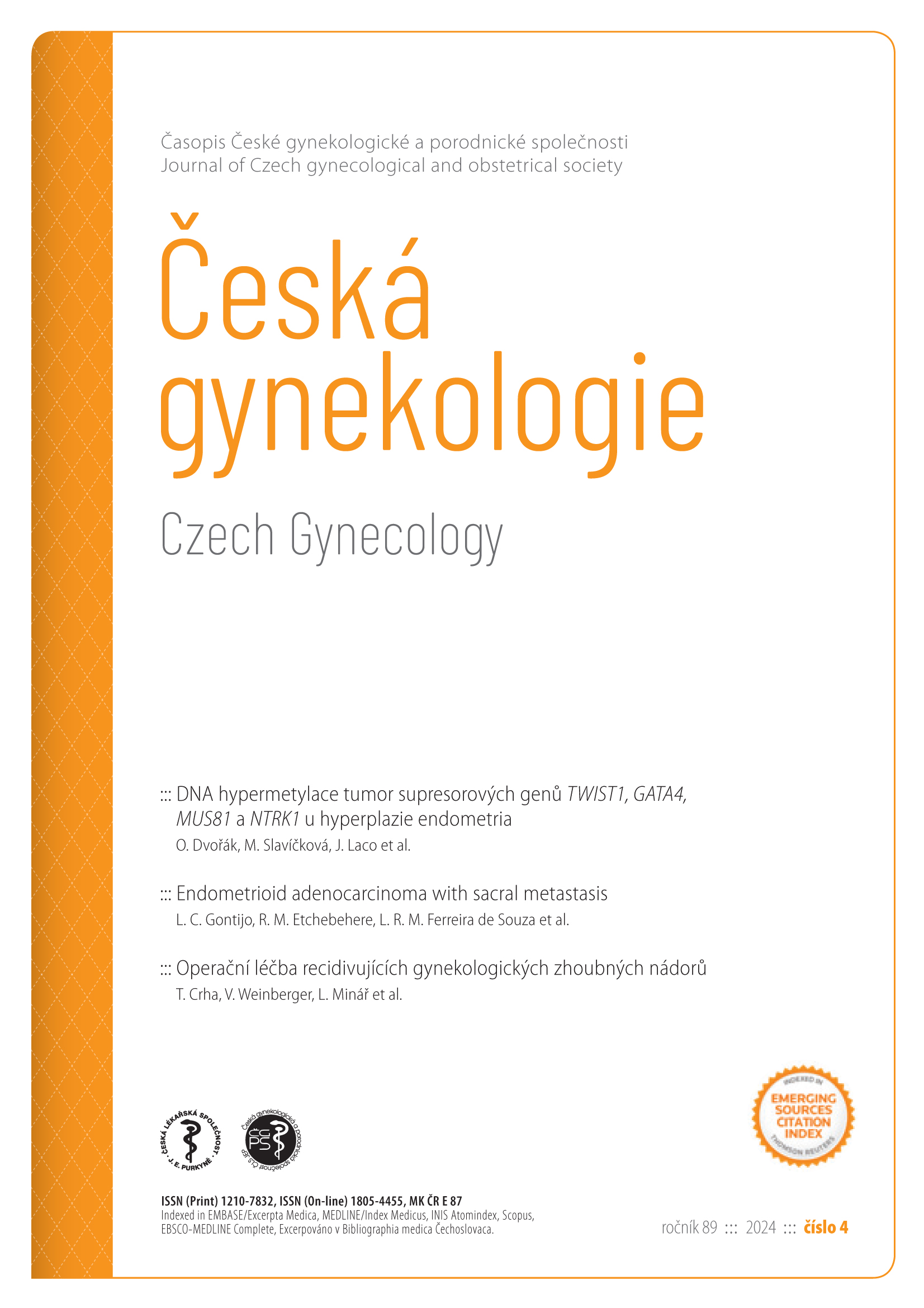Ureteroarterial fistula – a severe manifestation of urological toxicity with possibly fatal consequences
Keywords:
fistula, ureter, artery, hematuria, malignancyAbstract
Aim: A retrospective audit from a urological center focused on urological fistulas that directly connect with the treatment of gynecological malignancy. Ureteroarterial fistulas, i.e., pathological communication between the ureter and the artery, are discussed in more detail. Materials and methods: Over a period of ten years, from 2011 to 2020, a group of 47 patients with a diagnosis of urinary fistula was retrospectively evaluated. These patients, with a history of treatment for gynecological malignancy, were sent to our clinic from local and non regional departments in the Czech Republic. We found three cases of ureteroarterial fistula in the presented analysis that focused on urological toxicity of oncogynecological treatment. Results: Within the mentioned period of ten years, we recorded 64 cases of urinary fistulas, and 47 patients (73.4%) were directly related to oncogynecological treatment. In the group with gynecological tumors, we found three patients (6.4%) with a diagnosis of ureteroarterial fistula, two of whom died directly related to this complication (exsanguination). These patients were treated for cervical cancer. All of them underwent radiotherapy during the treatment. Conclusion: Ureteroarterial fistulas are the most severe complications that can occur in medicine. This work confirms that we have encountered these cases even recently. Management is highly demanding for patients affected in this way and requires multidisciplinary cooperation. Endovascular intervention methods can control bleeding in emergency situations with non-surgical approaches. However, they are usually the first step towards a definitive surgical solution.


